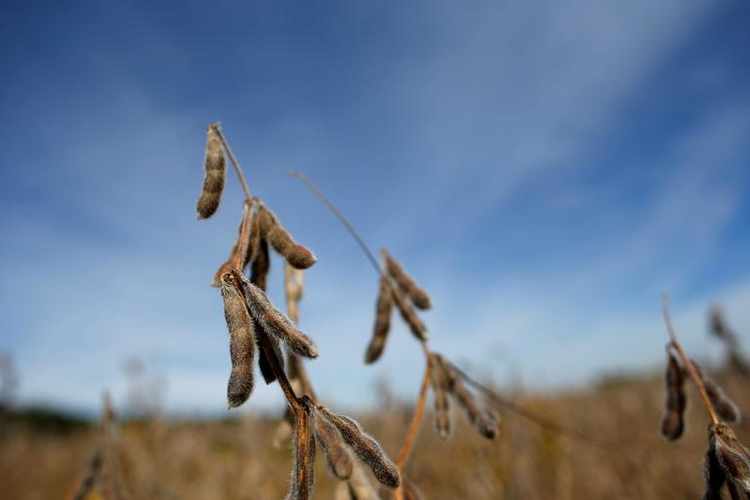Storms damage Brazilian soybeans

Beans are sprouting in their pods as some farms got 30 inches of rain in last three weeks.
Did Mato Grosso just have their own Derecho?
The central parts of Mato Grosso and Tocantins have been experiencing record rainfalls with some farms receiving 10 inches within a couple of days. A friend of mine who farms in northern Mato Grosso says it has rained over 30 inches in the last three weeks. It is as if the lack of rainfall to start the season has suddenly come all at once.
To be clear, large swamping rains are a regular occurrence in Brazil; however, even this is getting out of control.
Some soybeans can’t be harvested
The hardest hit region was the county of Sorriso, the largest producing county in the state. There is still a reported 25% of soybeans that were unharvested. I have been receiving pictures and videos stating that much of this will not be harvestable. Part of this is because the stalks have collapsed but even worse, the beans have all begun rotting or germinating in their pods.
So even if they were able to run machines through the field, quality levels are so poor that the elevators may not accept them. Not to mention drying costs would be very expensive even if they were accepted.
This has happened before, but it appears to have impacted a larger area than in the past.
This goes to show the year isn’t over until it is over. This would be a huge “gut check” for these producers. Some got off to a rocky start but they were still going to have record prices to more than make up for yield losses — until now. It is like waiting in line to pick up your winning lottery ticket and then having the door slammed in your face right before it is your turn to collect.
IMEA, the Mato Grosso Institute of Agricultural Economics, still increased Mato Grosso’s soybean production to 35.7 MMT but that was just before some of these latest rains.
Delayed corn planting
With all the heavy rainfall, it not only slows up the soybean harvest but delays the corn planting. Farmers sold ahead the majority of their crop and so feel compelled to plant despite the fact that the ideal planting window has now passed. Some of what has been planted has water damage while long term forecast is showing dry weather.
There could easily be a drop in 10 MMT if the dry weather materializes. That is nearly 400 million bushels that they can’t afford to lose.
The USDA still see these as mostly isolated incidences. They actually increased Brazil’s soybean output by 1 MMT to 134 MMT in the March crop report. They left corn production unchanged at 109 MMT. The corn production numbers are pure speculation at this point. If Brazil does get anywhere near 109 MMT, it will be because they planted a lot more than they originally intended, not because they produced well.
Read also
Wheat in Southern Brazil Impacted by Dry Weather and Frosts
Oilseed Industry. Leaders and Strategies in the Times of a Great Change
Black Sea & Danube Region: Oilseed and Vegoil Markets Within Ongoing Transfor...
Serbia. The drought will cause extremely high losses for farmers this year
2023/24 Safrinha Corn in Brazil 91% Harvested
Write to us
Our manager will contact you soon



